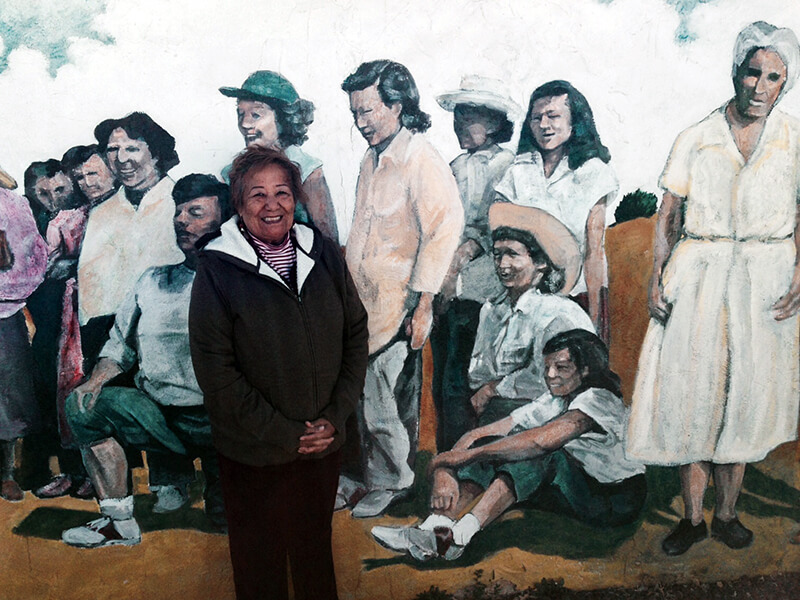Over 400 attendees gathered on Saturday, March 15th, at United Steelworkers Local 890 hall (former Mine, Mill, and Smelter Workers Local 890) in Bayard, New Mexico to commemorate the 60th anniversary of the groundbreaking 1954 film Salt of the Earth.
The film portrays the 1951 strike against Empire Zinc in which women took up the picket line after Empire Zinc obtained a court injunction blocking the mineworkers from picketing. Despite Empire Zinc’s determined effort to break the strike, including the use of tear gas and mass arrests of women and children, the women held the line. As a result of the workers’ and the women’s efforts, the union prevailed and won wage increases, better working conditions, and housing benefits for workers and their families.
The 1954 film depicts the dangerous working conditions and ethnic inequalities that Mexican-American mineworkers and a supportive women’s auxiliary united to combat during the strike. Salt of the Earth features numerous local union members and their families, including mineworker Juan Chacón, who played the male lead in the film. After its release, the film was blacklisted by the Hollywood establishment, which did not approve of its strong pro-labor message.
Several of the original 1951 mineworkers, women picketers, children and grandchildren of strikers, and participants in the film and the strike itself joined the Salt of the Earth celebration, which was sponsored by numerous community and labor groups including AFSCME, USW, and IATSE.

The anniversary events commenced at the Local 890 hall with morning coffee, donuts, and live music. A caravan of buses and cars left the hall for a two-hour tour of important locations during the strike, including a stop at a pedestrian tunnel that connected segregated areas of Hurley, New Mexico, a mine company town, and a stop at the location of the picket line itself. Original members of the women’s auxiliary shared emotionally charged recollections of their experiences on the picket line and during the mass arrests effected by Empire Zinc. Rachel Valencia, who walked the picket line as a 14-year old in 1951 and was hit by a sheriff deputy’s car, said that one of the lessons she learned as a result of the strike was that when companies “make people angry,” people “go and get educated.”

After the tour, participants reconvened for lunch at the Local 890 hall. Members of USW Locals 5252 and 915 from ASARCO/Grupo Mexico copper mines near Tucson, Arizona, grilled carne asada as local AFSCME officers served other dishes to the crowd of participants which overflowed the union hall and gathered in groups outside. Live music during the lunch included a performance by Loretta Chacón, grand-niece of Local 890 striker and Salt of the Earth actor, Juan Chacón.
Following the lunch, labor educator for USW and PhD candidate at Illinois State University Ericka Wills moderated a panel entitled “From Women’s Auxiliary to Women of Steel.” Guest speakers included Rachel Valencia; Anita Torrez, a veteran of the film and the strike; Sonia Montoya, a scholar and granddaughter of Feliciana Montoya, VP of the Ladies Auxiliary and Cipriano Montoya, former Local 890 President; Dr. Luis Quiñones, an educator, writer, and activist; and USW District 12 Director Robert LaVenture. In addition to the moving stories recounted by the strikers and their families, Director LaVenture spoke about the connection between the women’s auxiliary in 1952 and Women of Steel, USW’s activist arm for women. Director LaVenture also spoke about labor struggles that continue today over some of the same issues covered in the film: health and safety, benefits, and a fair wage for workers who do an honest day’s work.
For more information about Women of Steel and USW’s current fight for workers in the mining sector, especially in the Southwestern United States, visit http://www.usw.org and http://www.usw.org/asarco.
Photos by Josh Young.









2 Comments
Comments are closed.